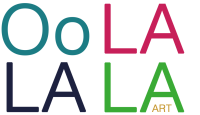For partnerships and collaborations, you can ask for the full project at:
contacts form on this website and we will get back to you as soon as possible.
Projects
AiR - Art in Residence
Project designed by Paola Cordischi
Collective Hvallo
For partnerships and collaborations, you can ask for the full project at:
contacts form on this website and we will get back to you as soon as possible.
Inception, rethinking the space.
Research, planning and drafting of the concept by Ozlem Oguzhan of Istanbul Medeniyet University, curator Enrica Benedetto.
For partnerships and collaborations, you can ask for the full project at:
contacts form on this website and we will get back to you as soon as possible.
GO! Project: The Journey of a Work of Art
Research, planning and drafting of the concept by Enrica Benedetto.
For partnerships and collaborations, you can ask for the full project at:
contacts form on this website and we will get back to you as soon as possible.
La Galleria d'appartamento: un percorso verso nuovi spazi d'arte
Interviste e testimonianze sull’esporre
La fluidità di queste premesse unita alla personale necessità di contribuire alla documentazione italiana riguardo agli argomenti sopra elencati, costituisce un saldo punto di appoggio per la ricerca che questa tesi merita. Infatti, parte della motivazione che ha alimentato la stesura di questo studio, proviene dalla volontà di mettere della luce in alcune zone d’ombra che persistono nel sistema dell’arte contemporanea.
Un sistema del tutto particolare, governato da leggi scritte e - soprattutto - non scritte, che scandiscono i ritmi dedicati alla cultura ed in particolar modo alle arti visive. Con specifico riferimento al momento storico coevo, durante il quale i progressi e le conquiste tecnologiche hanno reso completamente accessibile ogni sfumatura di informazione,anche il sistema artistico ha subito notevoli cambiamenti.
L’aspetto più lampante della spinta al cambiamento è certamente da inquadrare nella globalizzazione e, come precedentemente detto, nella disponibilità informativa. L’abbattimento di barriere fisiche e geografiche ha concesso ai professionistidel settore artistico, in primis agli artisti, di poter far conoscere il proprio lavoro attraverso i social media ed Internet, allargando il potenziale bacinodi clienti ed appassionati in un modo davvero sensazionale.
Di pari passo, anche le realtà culturali, sia pubbliche come musei che private come le gallerie d’arte, hanno adattato parte del proprio lavoro alle possibilità che offrono inuovi media a disposizione: studio visit virtuali, comunicati stampa a portatadi click e velocità nell’eseguire scouting artistico......
For partnerships and collaborations, you can ask for the full project at:
contacts form on this website and we will get back to you as soon as possible.
